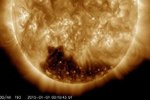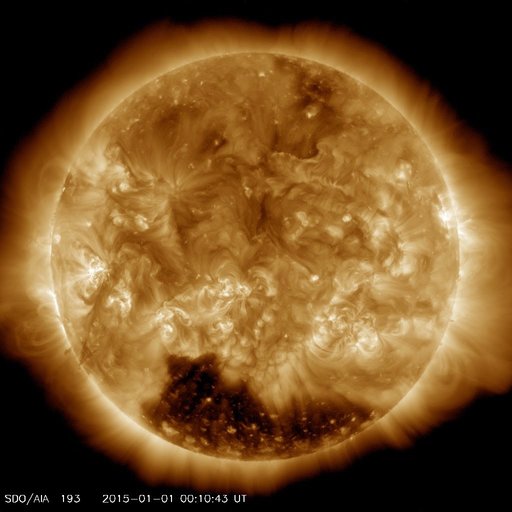NASA astronomers say a massive and mysterious coronal hole appeared close to the Sun’s south pole on January 1st.
The hole, which appears as the darker area on images, measures several thousands of miles across and is caused when the magnetic field, rather than looping back on to the solar surface, reaches out into space.
The sun’s surface appears much darker than the rest of the corona where the particles exit into space.
Astronomers used the AIA (Atmospheric Imaging Assembly) instrument, a device on NASA’s Solar Dynamics Observatory designed to provide an unprecedented view of the solar corona, to record the images.
The particles moving out into space are carried on a solar wind, which can reach speeds of up to 500 mph (800 kph).
Astronauts on board NASA’s Skylab space station first saw coronal holes in 1973 and 1974.
Corona holes can be seen for up to five years, and their shape may change depending on the prevailing conditions.
An AIA 193 Å image from January 1, 2015 showing the coronal hole, which is the dark region in the south. (Photo: NASA’s Solar Dynamics Observatory)
Whenever a coronal hole rotates by the Earth, scientists can measure the particles flowing away from the hole as a high-speed stream. Charged particles in the Earth’s radiation belts speed up when the stream hits the Earth’s magnetosphere (the region surrounding out planet in which the magnetic field is the predominant effective magnetic field).
NASA’s Van Allen Storm Probe mission studies the acceleration of particles in the magnetosphere.
In its New Year message, NASA’s Solar Dynamic Observatory wrote:
“As Solar Cycle 24 fades, the number of flares each day will get smaller, but the coronal holes provide another source of Space Weather that needs to be understood and predicted. Happy New Year!”


